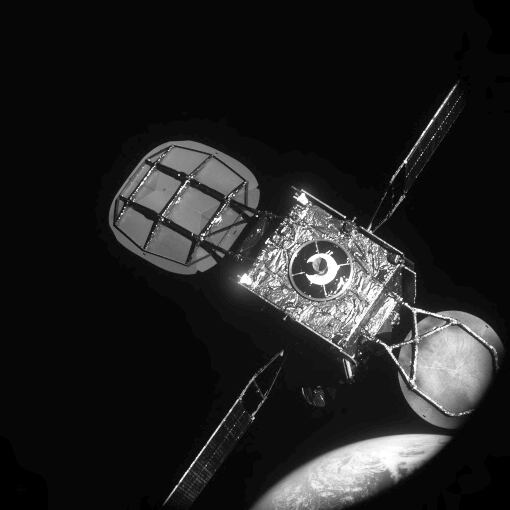ORLANDO — The U.S. Space Force is developing a plan for a satellite refueling and servicing capability that takes advantage of technology being developed by commercial space companies, according to the head of the service’s mobility enterprise.
The newest military service has been closely watching as companies test concepts for refueling and repairing satellites on orbit but hasn’t yet established acquisition programs or operational units to leverage that work. In August, the Space Force created a new role, deputy director of operations for servicing and maneuver, and appointed Col. Meredith Beg to lead the office. It held an industry day in September to learn more about the technology industry is developing.
These activities come as U.S. Space Command is seeing a need for its surveillance satellites to be more maneuverable, both to dodge debris and enemy spacecraft and to observe new areas in the space environment.
Maj. Gen. Stephen Purdy, program executive officer for assured access to space, told C4ISRNET this week that once the service has funding available, it wants to be ready to pay industry to provide those services for its own satellites.
“We want to do on-orbit servicing and maneuver and refueling as a service,” Purdy said in a Feb. 21 interview at the inaugural Space Mobility Conference in Orlando, hosted by the Space Force. “The urgency now is [to] figure out . . . what’s going to be there, figure out how to take advantage of it and then build that complicated structure internally.”
That internal structure, he said, includes manpower, physical space and contracting and acquisition strategies. It also means ensuring that satellites are equipped with the hardware to receive fuel or have a part replaced or added.
The service has proposed funding for on-orbit servicing as part of the Pentagon’s budget process, but those attempts have never made it to the Space Force’s final funding request, Purdy said. Congress added $30 million for space mobility and logistics in the Fiscal 2023 Omnibus Appropriations Act, which he views as an indication that lawmakers are interested in the concept.
“There’s interest on the hill already, so we’ll continue to push that effort,” Purdy said.
Beg, who leads the new servicing and maneuver office, said during a panel discussion at the same conference that the Space Force plans to use the funding to develop an operational concept for using these services.
She noted that the Space Force is working with NASA and the Pentagon’s Defense Innovation Unit, which was created to strengthen partnerships between non-traditional companies and DoD. The Space Force is also taking advantage of contracts awarded last June by its technology arm SpaceWERX, which chose 125 teams to advance in-space servicing and orbital debris removal technologies.
“It’s not going to be easy, but we’re partnering with the right individuals to help us,” Beg said.
Claire Leon, head of the Space Force’s space systems integration office, highlighted efforts to develop a propulsion interface. She said that until the service has a formal program, it will likely take slow steps toward embracing these capabilities.
“There isn’t a program out there that has a hard requirement that says, ‘You will be refueling,’” she said during a panel discussion at the conference. “We are taking baby steps.”
Courtney Albon is C4ISRNET’s space and emerging technology reporter. She has covered the U.S. military since 2012, with a focus on the Air Force and Space Force. She has reported on some of the Defense Department’s most significant acquisition, budget and policy challenges.





